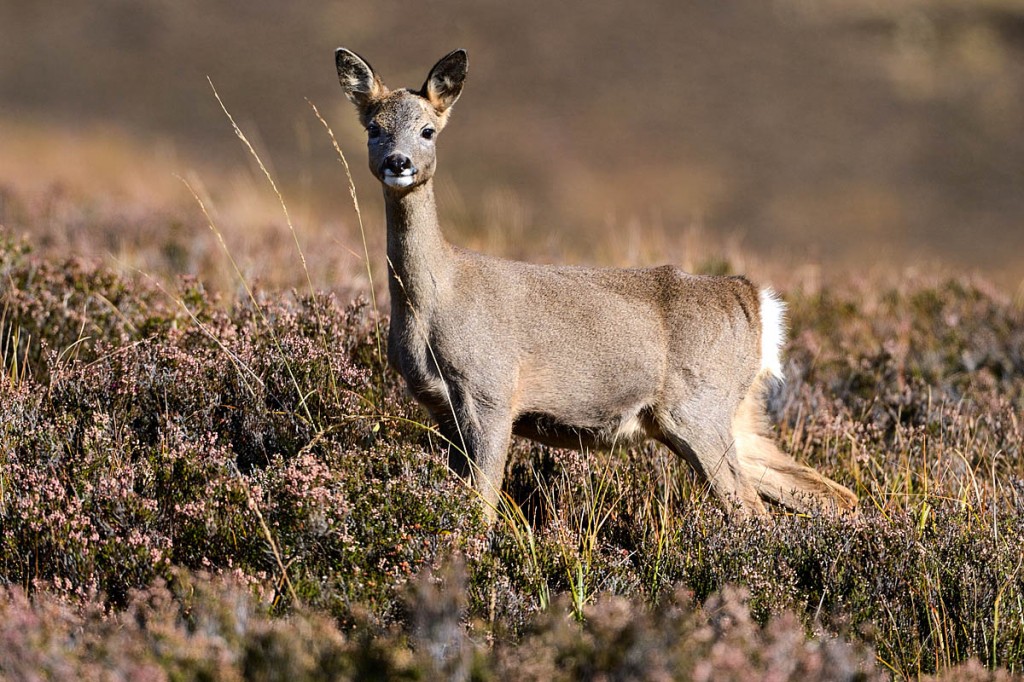Scotland’s official outdoors body is urging people to take extra care on the nation’s roads as the end of British Summer Time signals an increased risk of hitting deer.
Scottish Natural Heritage said with night falling earlier, the peak commuting time coincides with deer coming out to feed on grass verges near roadsides.
There are more than 7,000 collisions between vehicles and the animals each year in Scotland, with an estimated economic cost of £7m. On average, 65 of these result in injury to the vehicles’ occupants.
Because of this, SNH, in conjunction with Transport Scotland and Traffic Scotland, are placing warning messages on electronic variable messaging signs. From the evening of Sunday, 25 October to Monday, 16 November, the signs will warn motorists at sites on the main trunk roads across west and north-west Scotland. The messages will be seen on signs on the A9, A87, A82, A85 and the A835.
Sinclair Coghill, SNH’s deer management officer, said: “From October to December, there is a higher risk of deer on the road as deer move down to lower lying ground for forage and shelter, with the highest risk from sunset to midnight and shortly before and after sunrise.
“We advise motorists to slow down and watch for deer crossing roads. Be particularly alert if you’re driving near woods where deer can suddenly appear before you have time to brake. If you do hit a deer, report it to the police, as the deer may be fatally injured and suffering.”
Dr Jochen Langbein, who oversees the Deer Vehicle Collisions Project, said: “Many people think most accidents with deer and vehicles occur on more remote Highland roads, but in Scotland up to 70 per cent occur on A-class trunk roads or motorways. As well, when traffic volume is taken into consideration, the risk of a collision with a deer is about twice as high per vehicle-mile driven in Scotland compared to England.”
Across the UK, it’s estimated there are between 42,000 and 74,000 deer-related accidents with vehicles a year, resulting in more than 450 human injuries and several fatalities every year, with an annual cost approaching £47m.
Richard Cooke of the Association of Deer Management Groups said: “Deer are a danger on our roads at any time of year, more or less anywhere in Scotland, but it is particularly important to look out for them in the spring and autumn. To reduce incidents, drive within the speed limit to give you a chance of stopping.”
Other tips include:
- Try not to suddenly swerve to avoid hitting a deer. A collision into oncoming traffic could be even worse
- Only brake sharply and stop if there is no danger of being hit by following or oncoming traffic. Try to come to a stop as far away from the animals as possible to allow them to leave the roadside without panic, and use your hazard warning lights
- Be aware that more deer may cross after the one or two you first see, as deer often travel in groups
- After dark, use full-beams when there is no oncoming traffic, as this will illuminate the eyes of deer on or near a roadway and give you more time to react. But dim your headlights when you see a deer or other animal on the road so you don’t startle it
- Report any deer-vehicle collisions to the police, who will contact the local person who can best help with an injured deer at the roadside. Do not approach an injured deer yourself it may be dangerous.
- British Summer Time ends at 2am on Sunday 25 October, when clocks should be put back an hour.

Harry Hood
23 October 2015Red deer numbers in Scotland are 20 times higher than is natural. They are forest dwelling animals in Europe, where Red stags stand 6 feet tall at the shoulder & not 4 feet like their Scottish cousins, but there are so many of them in the Highlands they have eaten all the trees. Consequently large numbers of them die from hypothermia & starvation each winter. Their numbers should be reduced by 95% & the grand 'sporting' estates who maintain unnaturally large numbers of unnaturally undersized animals should be charged with extreme animal cruelty for overcrowding them with insufficient feed or shelter, ie forests.